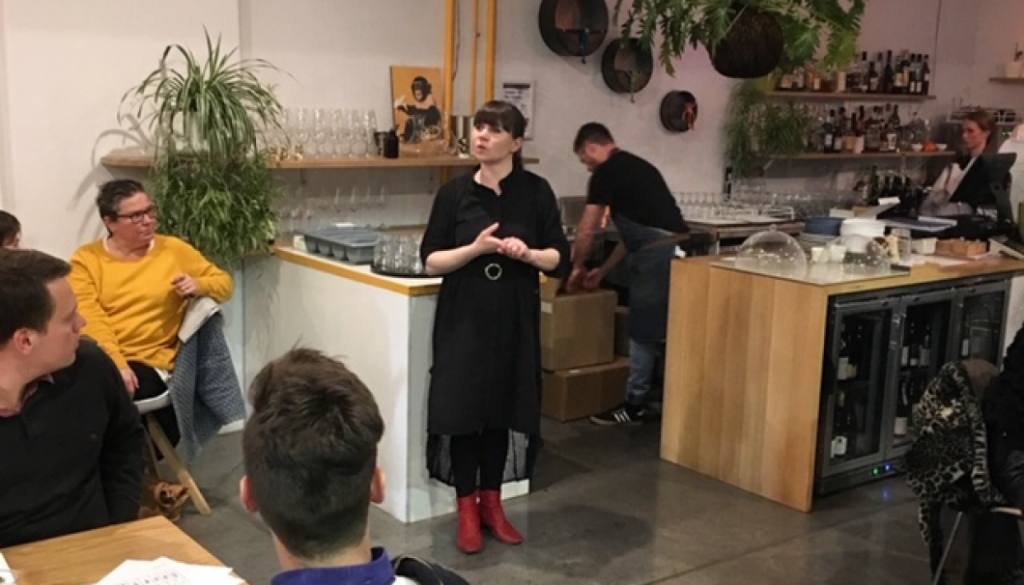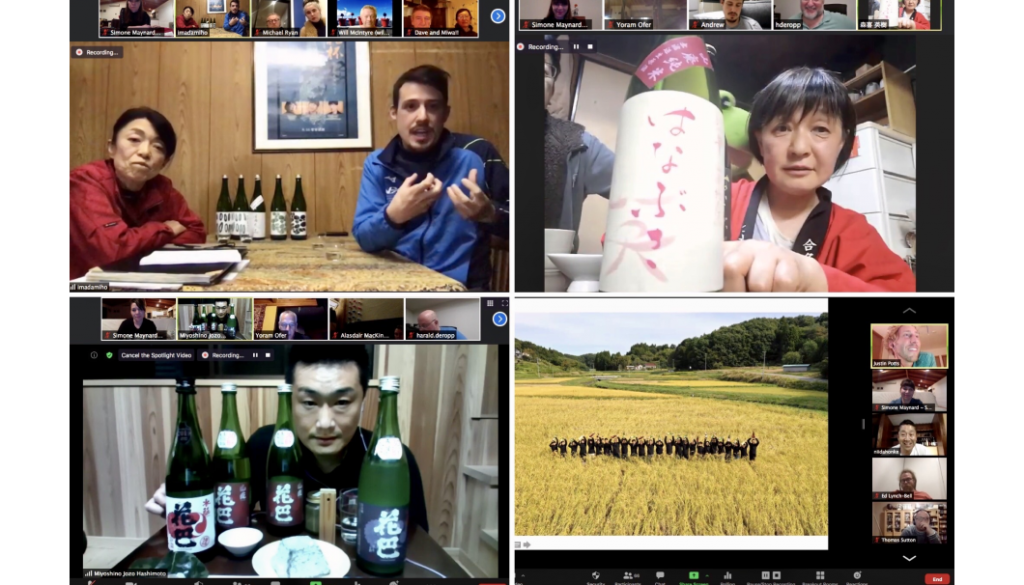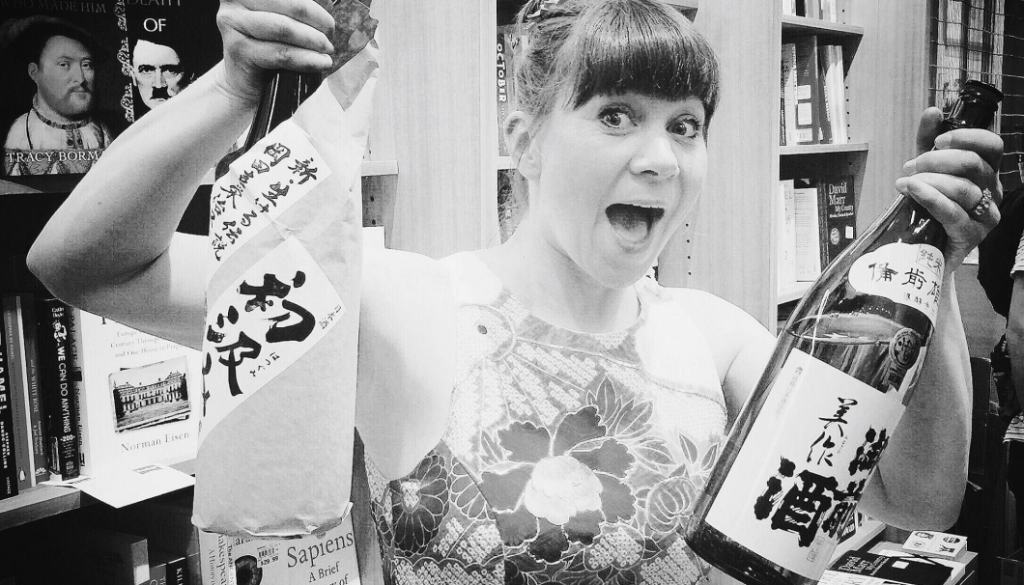
Simone Maynard: Host of ‘Taste with the Toji’ Shares Sake’s Narrative Appeal
Feb. 24. 2022 writer


The host of Taste with the Toji has tips for turning up the heat in your sake love affair
As a sake educator, Simone Maynard is used to playing Cupid between brewers and sake fans. Her popular Taste with the Toji online events have been bringing together sake makers and drinkers throughout the pandemic, forging connections and deeper appreciation for the craft and history of sake. For those just starting to feel the tingling of infatuation with this alluring drink, Maynard has some tips to help that initial blush bloom into a long-term relationship.

Like wine, sake is a beverage defined by subtle flavors and aromas, but Maynard feels it’s important not to undervalue the magnetic power of the narratives behind sake production. Many a sake novice has fallen in love with the story of a family brewery passing down their craft for generations or a unique ingredient or style that’s captured a toji’s heart.
“When I do tasting events and we have bottles for sale, I always have a bottle of Imada’s Fukucho Hattanso. Hattanso rice was an heirloom rice that [Miho Imada] brought back from near extinction. She dedicated over 10 years of her life bringing this rice back to fruition and brewing with it successfully. She is the only brewer currently using this rice. You tell that to people, they want to try it. They try it, they love it. They buy it because they love the story,” says Maynard.
So don’t be afraid to follow your heart into the sake world, connecting with the people and the stories just as much as you do with the taste.

“I find that people respond better to their engagement with [sake] if they go out somewhere,” says Maynard.
Part of this is just the fact that in a restaurant or bar, it’s easier to try multiple sake styles or flights without committing to a whole bottle, but it’s also about having someone who can guide the experience and talk about the brewery, the rice, the region, and the style. This creates a more well-rounded sake encounter that includes curated food pairings, too.
And there is something to be said for the communal enjoyment of sake, a passion that can be infectious.
“You can have the best cut of steak, cook it at home to perfection, eat it, think it’s amazing, but if you’re in a restaurant where other people are enjoying that too and you can smell the food in the kitchen, you can see how happy it’s making everybody and you can hear that there’s a good energy in the air, you’re going to have a much more enjoyable experience. And the same goes with drinking sake. If you are at home drinking sake, you might like it but your partner doesn’t, so you can’t really share the experience with anyone. There’s no one around you with that same buzz. So get out there and get amongst the buzz!”

As you start exploring sake and you find one you really like, be sure to note the name not just of the sake but the brewery as well. If you like one of their offerings, chances are you will find their other sake intriguing too and a comparison can help you narrow down what facets of a sake are speaking to you.
“For example, if you have something from Moriki Shuzo, write it down, have a look at what else is available and just start working out what it is you love about that particular sake. Is it the fact that it’s more savory? Is it the fact that you can drink it at different temperatures?” says Maynard.
Getting a handle on precisely what kinds of sake you enjoy will help you choose new ones with a higher success rate.
When you do start purchasing bottles for home consumption, don’t be afraid to get a couple at a time, despite what you may have heard about shelf life.

“We all know that sake has a much longer lifespan in the fridge or even outside the fridge once it’s been opened,” says Maynard. “Buy more than one bottle, if you can afford it. And open two or three at the same time and try those three sake with a cheddar cheese, try them with your steak, try them all with the chicken. Don’t just try one and go, ‘that didn’t work.’ It’s about being open-minded, exploring.”
Remember that unpasteurized sake won’t keep quite as long as pasteurized stuff, but both should survive a good couple of weeks if refrigerated. For tips on how to best store your open bottles, check out our handy guide.
If you don’t have the space or budget for multiple bottles, Maynard recommends exploring the possibilities of a junmai.
“I used to say to people, if you haven’t had sake before and you are looking for a bottle, go for ginjo,” says Maynard. “But the more events I do, I’m finding people actually single out the yamahai, the kimoto, or the koshu, even more so than a highly polished rice sake. So that kind of blew that theory out of the water. So now I tend to suggest trying a junmai, something that has versatility and is flexible with serving temperature.”

She continues, “Buy a junmai and play around with the temperature. If you don’t like it cold, try it room temperature. If you don’t like it room temperature, try it warm… And try it with different foods. Don’t just have it in mind that you are going to buy a yamahai because you are having a steak. Try it with blue cheese. Try it with all sorts of things. Because there will be a moment where you go, ‘Aha! I love it!’”
And that moment is the beginning of your happily ever after.
*If you would like us to send you monthly updates and information, register here.
Comments